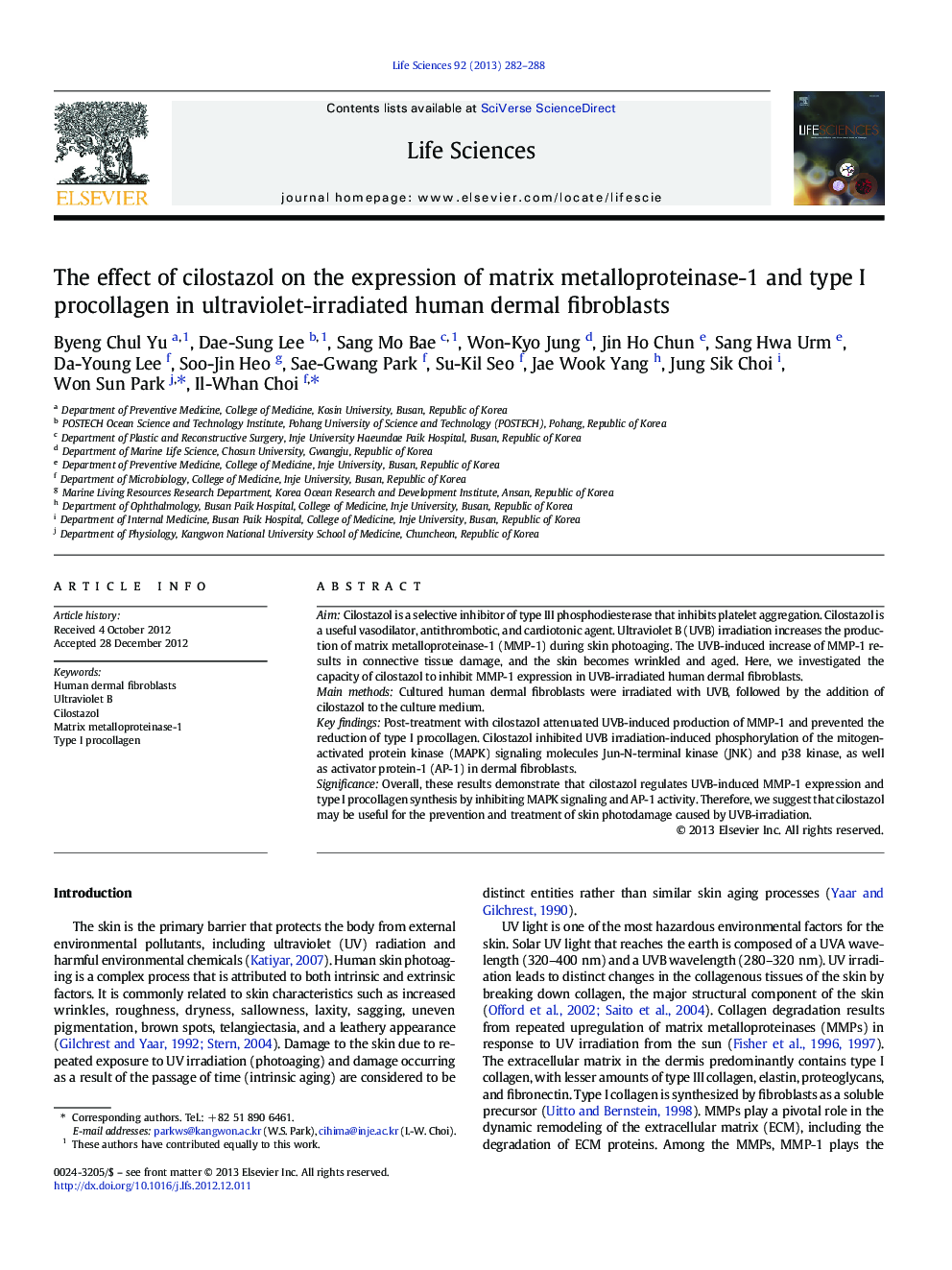| کد مقاله | کد نشریه | سال انتشار | مقاله انگلیسی | نسخه تمام متن |
|---|---|---|---|---|
| 2551593 | 1560635 | 2013 | 7 صفحه PDF | دانلود رایگان |

AimCilostazol is a selective inhibitor of type III phosphodiesterase that inhibits platelet aggregation. Cilostazol is a useful vasodilator, antithrombotic, and cardiotonic agent. Ultraviolet B (UVB) irradiation increases the production of matrix metalloproteinase-1 (MMP-1) during skin photoaging. The UVB-induced increase of MMP-1 results in connective tissue damage, and the skin becomes wrinkled and aged. Here, we investigated the capacity of cilostazol to inhibit MMP-1 expression in UVB-irradiated human dermal fibroblasts.Main methodsCultured human dermal fibroblasts were irradiated with UVB, followed by the addition of cilostazol to the culture medium.Key findingsPost-treatment with cilostazol attenuated UVB-induced production of MMP-1 and prevented the reduction of type I procollagen. Cilostazol inhibited UVB irradiation-induced phosphorylation of the mitogen-activated protein kinase (MAPK) signaling molecules Jun-N-terminal kinase (JNK) and p38 kinase, as well as activator protein-1 (AP-1) in dermal fibroblasts.SignificanceOverall, these results demonstrate that cilostazol regulates UVB-induced MMP-1 expression and type I procollagen synthesis by inhibiting MAPK signaling and AP-1 activity. Therefore, we suggest that cilostazol may be useful for the prevention and treatment of skin photodamage caused by UVB-irradiation.
Journal: Life Sciences - Volume 92, Issues 4–5, 12 March 2013, Pages 282–288